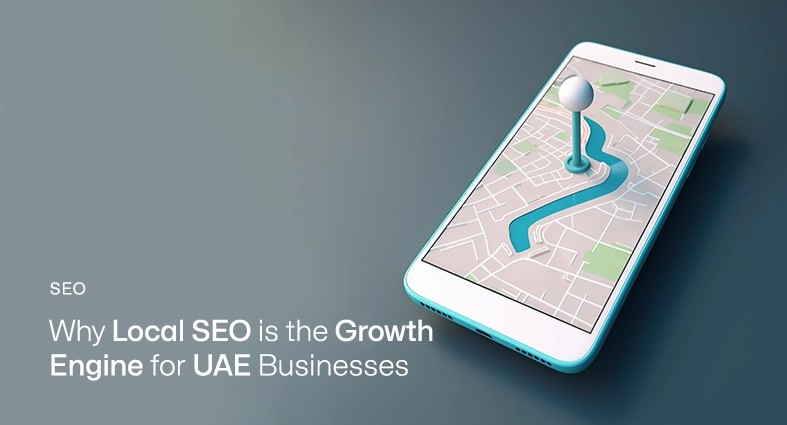The realm of online engagement has undergone a profound transformation, and at the forefront of this evolution lies a device that has become inseparable from our daily lives – the smartphone. Mobile optimization, often viewed as a mere technicality, is, in fact, a strategic cornerstone for businesses and their websites. It’s not an exaggeration to say that mobile optimization can make or break your online presence. As we delve into this topic, we’ll discover why mobile optimization is not just an afterthought but an absolute necessity, supported by compelling statistics that underline its significance. We’ll also explore the best practices that can elevate your website’s performance on small screens, enhancing user experience and boosting your digital presence. Furthermore, we’ll draw inspiration from industry leaders who have harnessed the power of mobile optimization to thrive in this mobile-first world, ultimately revealing the transformative potential that optimizing for the small screen can unlock for your website.
Why Mobile Optimization Matters
With an ever-increasing number of people using smartphones and tablets as their primary means of accessing the internet, ensuring that your website is mobile-friendly is not just a choice but a fundamental requirement in the digital age. The mobile revolution, the dominance of mobile traffic, the improvement in user experience, and the SEO benefits all underscore the importance of ensuring that your website is optimized for mobile devices. Neglecting this aspect can have detrimental effects on your online presence and competitiveness in today’s digital landscape. To stay relevant and successful, prioritize mobile optimization as a central component of your web strategy.
The Mobile Revolution
The ascent of mobile devices has truly revolutionized the way we interact with the digital world. We’ve witnessed an unprecedented surge in smartphone usage, and according to Statista, the number of smartphone users worldwide was projected to reach a staggering 3.8 billion by 2021. This astronomical figure underscores the immense potential that the mobile platform offers to businesses.
Mobile Traffic Dominance
Mobile optimization is no longer an option; it’s a strategic imperative. Google’s mobile-first indexing, which prioritizes mobile-friendly websites in search results, serves as a clear testament to this paradigm shift. Recent statistics reveal that mobile devices account for over 50% of global website traffic. Failure to optimize your website for mobile can result in losing out on half of your potential audience.
Enhanced User Experience
User experience (UX) is at the core of mobile optimization. Mobile users have unique needs and expectations compared to their desktop counterparts. A mobile-optimized website ensures a smooth and user-friendly experience, boosting customer satisfaction and engagement. Meeting these expectations is paramount in a world where user experience can make or break a brand’s reputation.
SEO Benefits
Search engine optimization (SEO) is critical for visibility in the digital realm. Mobile optimization isn’t just about aesthetics; it directly impacts your website’s SEO. Google ranks mobile-optimized websites higher in mobile search results, making it a crucial factor in determining your online visibility. This synergy between mobile optimization and SEO emphasizes its indispensable role in today’s digital marketing landscape.
Best Practices for Mobile Optimization
Now that we understand the importance of mobile optimization, let’s explore the best practices that can help your website shine on small screens. To ensure a seamless user experience and better search engine rankings, it’s essential to follow these best practices.
Responsive Design
Responsive design is the foundation of mobile optimization. It ensures that your website adapts seamlessly to various screen sizes and orientations. A responsive website is versatile, providing an optimal viewing experience on any device. Google recommends responsive design as it simplifies the crawling and indexing process. The significance of responsive design cannot be overstated, and its importance is underscored by none other than Google itself. The search engine giant not only acknowledges but actively recommends responsive design.
Swift Load Times
Mobile users are notorious for their impatience. A slow-loading website can lead to high bounce rates and lost opportunities. Optimize your website for speed by minimizing large images, using efficient coding, and leveraging browser caching. First and foremost, consider minimizing the size of large images, a common culprit for slow load times. Additionally, focus on efficient coding practices that reduce unnecessary scripts and bloat. Leveraging browser caching can also help speed up the loading process significantly.
Simplified Navigation
Mobile users appreciate simplicity and ease of navigation. Streamline your menu and content organization to make it effortless for users to find what they need. Clear and concise navigation menus play a pivotal role in this regard. Drop-down lists can provide quick access to various sections of your site, further enhancing user convenience. Equally important is establishing a logical content hierarchy that guides users intuitively through your website, ensuring they don’t feel lost or overwhelmed by excessive information.
Image and Video Optimization
Images and videos play a pivotal role in engaging users. However, they can also slow down your website if not optimized correctly. Compress images and videos to reduce load times without compromising quality. Implementing lazy loading for images and videos is another key strategy. With this technique, media elements are loaded only when they come into the user’s viewport. This not only accelerates initial page loading but also conserves the user’s data usage, especially crucial for mobile users on limited data plans.
Concise Content
Understanding the reading habits of mobile users is pivotal for creating engaging content. Mobile users tend to skim rather than read in-depth, making concise and scannable content essential. To achieve this, structure your content with short paragraphs that are easy to digest. Bullet points and subheadings break up the text, making it more visually appealing and navigable. Additionally, strategically highlight key information and calls to action to capture and maintain user attention. In essence, your content should be designed to cater to the mobile user’s preference for quick access to relevant information.
Mobile-Friendly Forms and Checkout
For websites that involve forms or e-commerce, optimizing these processes for mobile users is mission-critical. Mobile screens have limited real estate, so it’s imperative to ensure that forms are easy to fill out, even on small displays. The checkout process, in particular, must be straightforward and frictionless to prevent cart abandonment. Implementing features like auto-fill for commonly entered information and providing mobile-friendly payment options, such as mobile wallets, can significantly enhance the user experience during the checkout process. This mobile-centric approach not only fosters user satisfaction but also bolsters conversion rates, translating into tangible business success.
Examples of Success Stories
Mobile optimization has become a critical component of success for businesses in today’s digital landscape. Let’s delve deeper into some real-world examples of companies that have not only embraced mobile optimization but have also reaped substantial rewards from their efforts.
Amazon
Amazon, the global e-commerce behemoth, stands as a prime example of mastering mobile optimization. Its app and mobile website offer a seamless shopping experience, making it easy for users to browse products, read reviews, and make purchases on their smartphones. This dedication to mobile optimization has contributed significantly to Amazon’s success. One key aspect of Amazon’s mobile optimization strategy is its user-centric approach. The company continually refines its app and website based on user feedback and behavior analysis. Customers can easily navigate through personalized product recommendations, streamlined checkout processes, and hassle-free payment options. Amazon’s mobile success isn’t solely reliant on functionality; aesthetics play a significant role as well. Their mobile interface is sleek, visually appealing, and user-friendly, ensuring that customers not only find what they need but enjoy the process. All of these elements combine to create a mobile shopping experience that keeps customers coming back for more.
Airbnb
Airbnb, the disruptor of the hospitality industry, has harnessed the power of mobile optimization to redefine how travelers find and book accommodations. The intuitive design and smooth user experience have made Airbnb a go-to platform for travelers worldwide. The success of Airbnb’s mobile app is rooted in its ability to simplify the complex process of finding and booking lodging. Travelers can effortlessly search for accommodations, communicate with hosts, and secure stays, all within the app’s user-friendly interface. One standout feature of Airbnb’s mobile optimization strategy is its focus on personalization. The app leverages user data to offer tailored recommendations, ensuring that travelers are presented with options that align with their preferences and past bookings. Airbnb’s mobile app incorporates features like secure payment processing, real-time messaging, and comprehensive property listings.
Starbucks
Coffee giant Starbucks has embraced mobile optimization through its app. Users can order and pay for their favorite beverages in advance, reducing wait times at the store. This convenience has not only enhanced the customer experience but also boosted Starbucks’ sales. One of the primary drivers behind Starbucks’ mobile success is the emphasis on speed and efficiency. The app’s intuitive interface enables customers to browse the menu, customize their orders, and make payments seamlessly. The mobile app’s location-based services further enhance the customer experience. Users can locate nearby Starbucks stores, place their orders, and have their drinks ready for pickup as they arrive, eliminating the need to wait in long lines. The app’s ease of use and time-saving features have led to increased sales and improved customer satisfaction.
Conclusion
Mobile optimization isn’t just about accommodating small screens; it’s about unlocking the immense potential of a vast and ever-growing audience. From responsive design to swift load times and simplified navigation, the best practices of mobile optimization can significantly impact your website’s success. By ensuring an excellent user experience on mobile devices, you can improve customer satisfaction, boost your website’s SEO, and ultimately, drive business growth. The success stories of industry giants like Amazon, Airbnb, and Starbucks serve as a testament to the transformative power of mobile optimization. It’s not merely a feature; it’s a strategic advantage in the digital landscape. So, embrace the small screen and make a big impact on your website’s future. Are you ready to transform your business through cutting-edge IT solutions? Take the first step and contact us today for an expert consultation!
Read more blogs at:
Abu Dhabi’s Digital Marketing Ecosystem Demystified | 7 Reasons Why You Should Hire a Digital Marketing Agency| Best Social Media Channels for Marketing Your Business | The Rise of the Machines: How AI is Revolutionizing Online Marketing | Benefits of Social Media Marketing for Businesses | Social Symphony: Mastering Social Media Engagement in Abu Dhabi
services
Feel free to send us a message.
Please, share your thoughts, and let's chat over a cup of tea.




















